On January 26–27, 1967, Chicago experienced its worst snowstorm on record. The snow began at 5:02 a.m. on Thursday, January 26, and by 10:10 a.m. the next day, a record 23.0 inches of snowfall from a storm blanketed the city. High winds caused considerable blowing, with drifts of 4 to 6 feet widespread throughout the area.
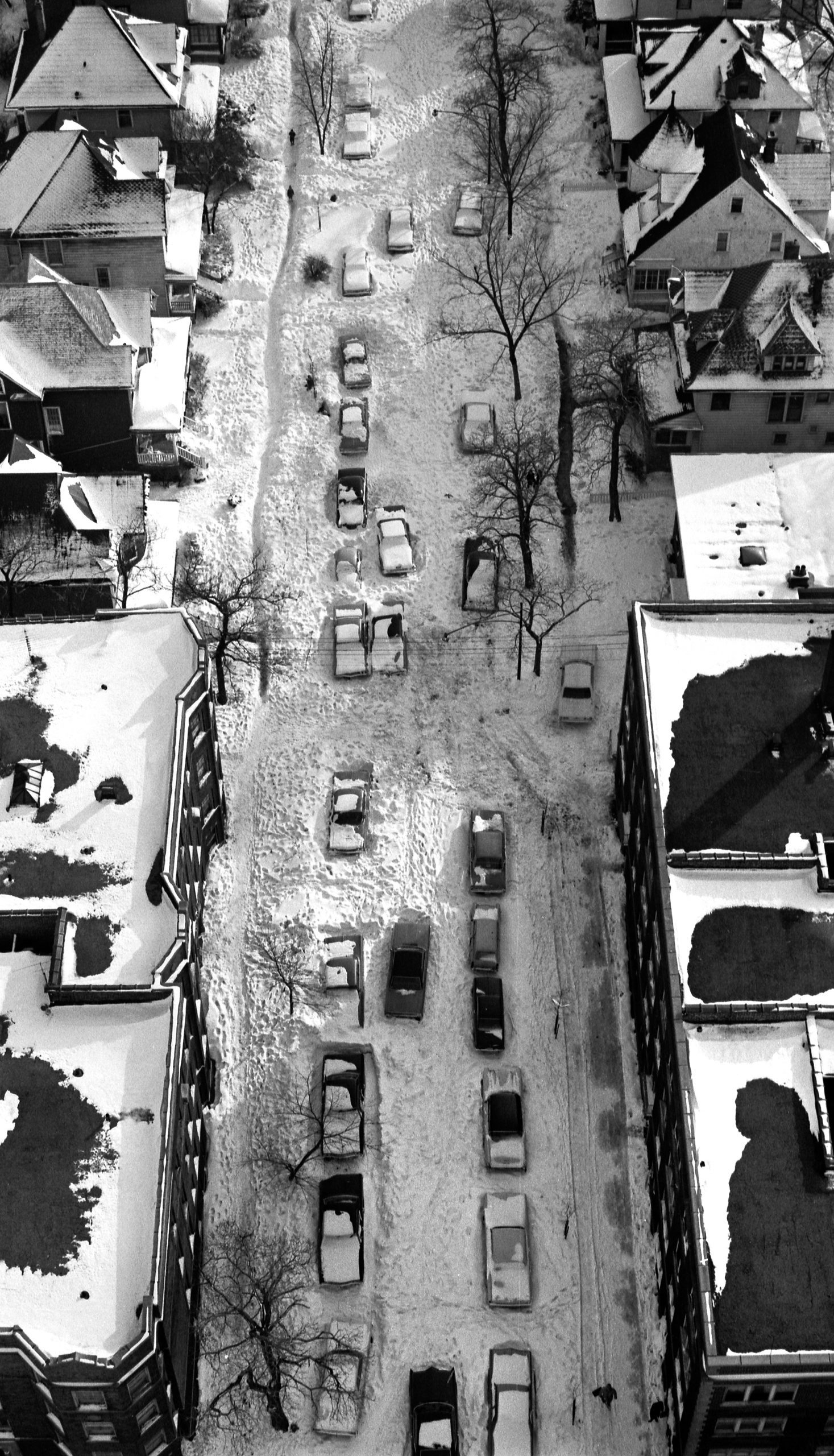
Aerial view of cars stuck on Greenview Avenue in Rogers Park, Chicago, January 26, 1967; ST-17500889, Chicago Sun-Times collection, CHM
Just two days before the storm, the high temperature was a record 65°F, and the low was 44°F. But on January 25, a cold front moved through the upper Midwest, replacing the balmy temperatures. Dew points in the 50s–60s over the Southern Plains and Gulf Coast states provided ample moisture, while high pressure centered over Lake Superior and southern Ontario kept cold dry air moving over the Great Lakes. That high pressure along with low pressure over the Ohio Valley caused winds to howl off Lake Michigan.
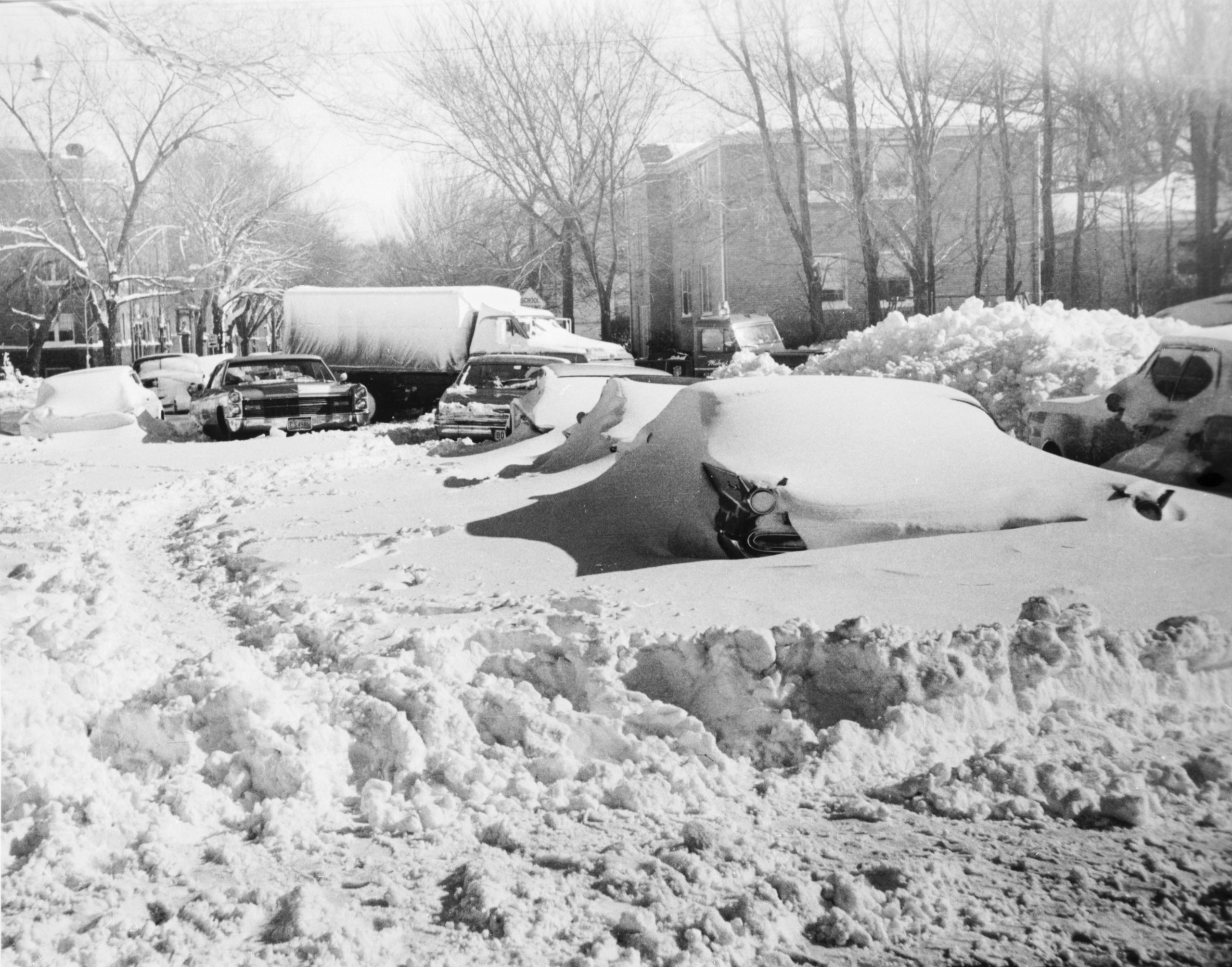
Cars covered with snow on Rosemont Ave. looking east from California Ave., January 1967; CHM, ICHi-035577, Howard B. Anderson, photographer
By noon, about 8 inches of snow was already on the ground, and O’Hare airport was shut down. Some schools and businesses released students and employees early, but the commute home was still treacherous. By Friday morning, Chicago was at a standstill—20,000 cars and 1,100 CTA buses were stranded. Helicopters delivered medical supplies to hospitals as well as food and blankets to stranded motorists. At least a dozen babies were born at home, though some expectant mothers were taken to hospitals by sled, bulldozer, and snowplow.
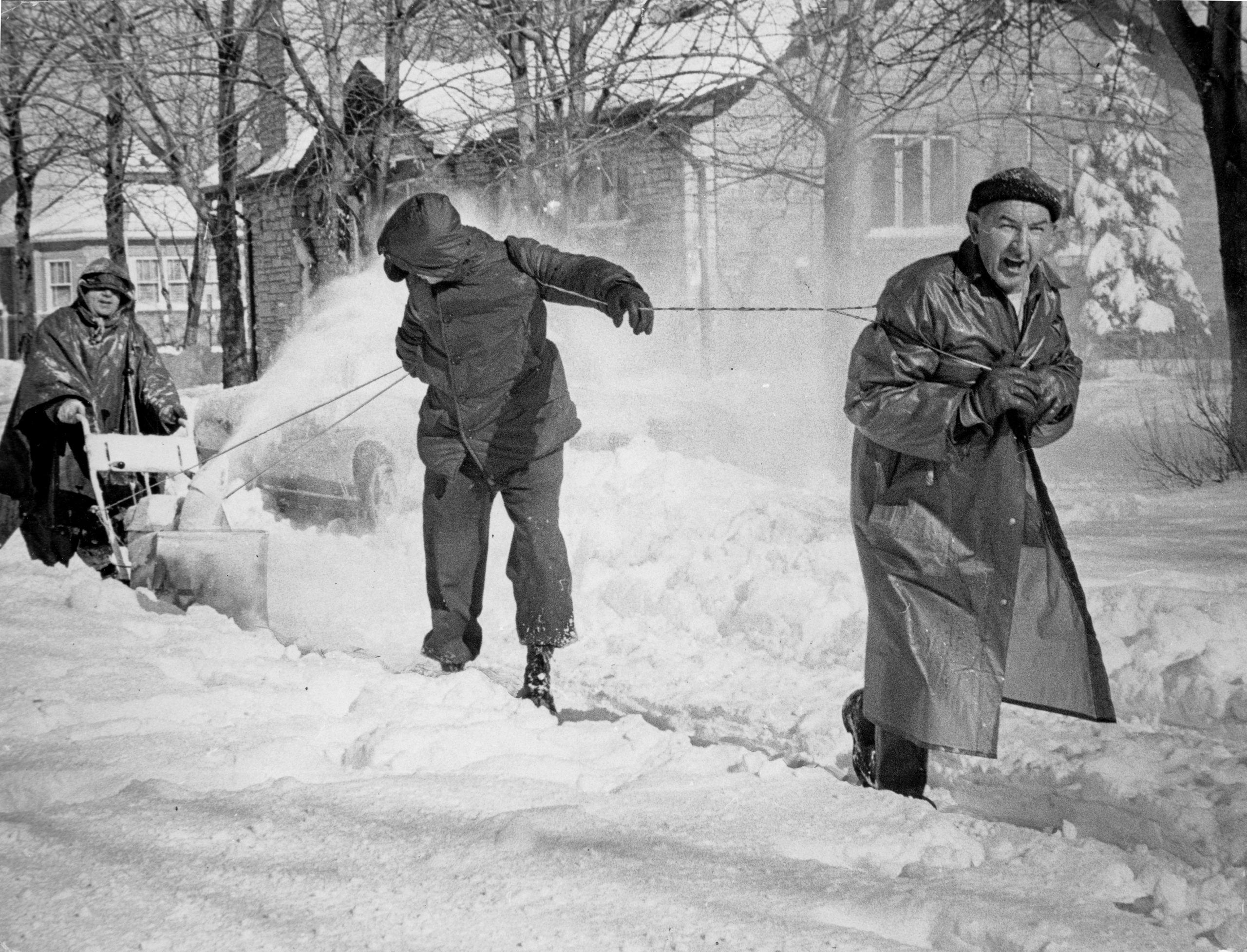
One man pushes a snowblower while two men pull with a rope to clean the sidewalk after the blizzard, January 1967; CHM, MDN-0000013
By January 28, Chicago had begun to dig itself out. Although CTA buses were operating most lines, abandoned vehicles hampered cleanup, and snow had to be hauled by dump truck to the Chicago River. Railcars of snow were even delivered to Fort Myers Beach, Florida, after 13-year-old Terri Hodson wrote a letter to the president of the Chicago, Burlington and Quincy Railroad, having never seen snow before.
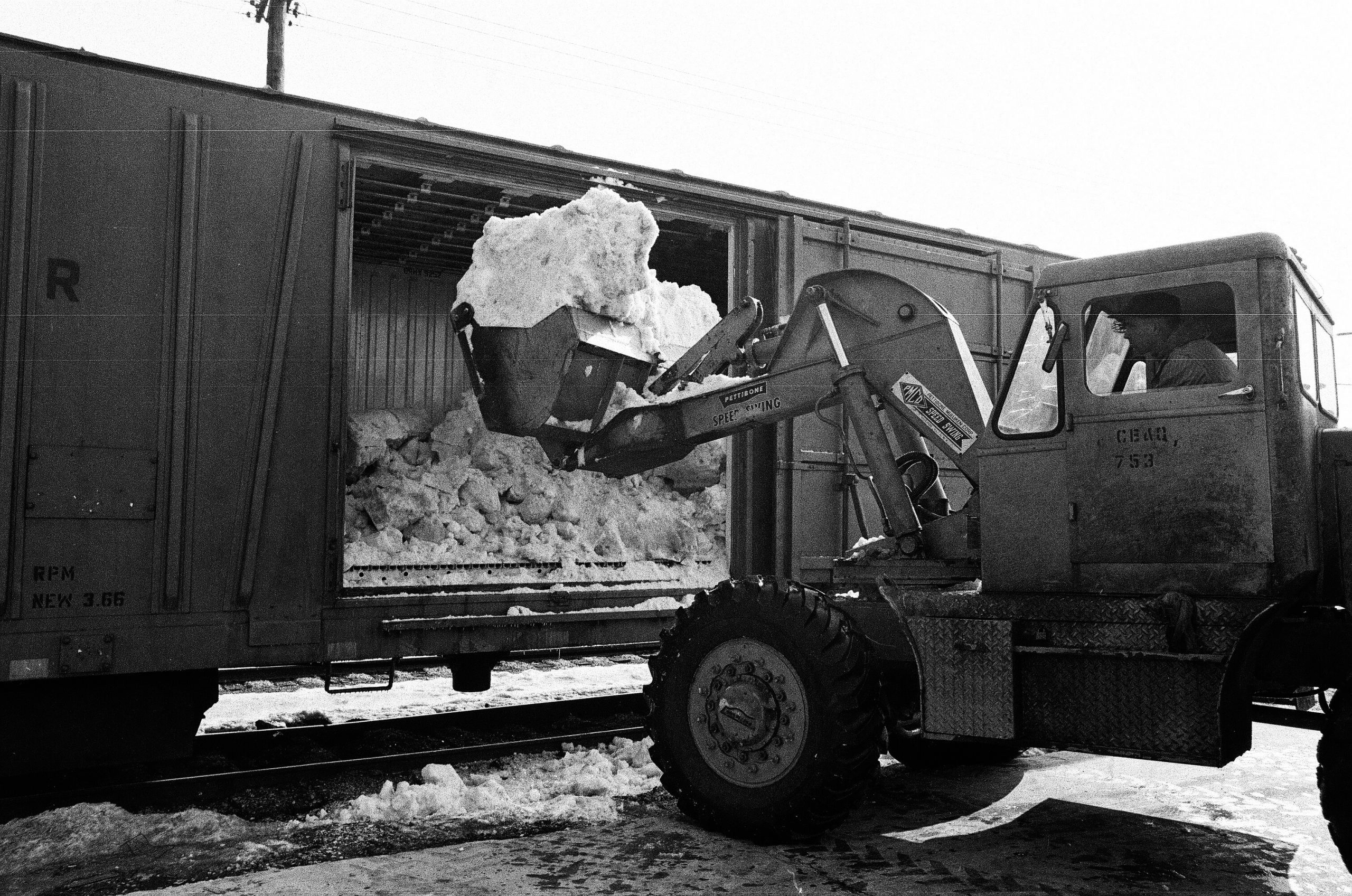
Packing snow in a refrigerated rail car to send to Florida, February 20, 1967; ST-15002021-0012, Chicago Sun-Times collection, CHM
O’Hare finally reopened around midnight on Monday, January 30, but most schools didn’t reopen until Tuesday. In the end, 60 people in the Chicago area died, and there was an estimated $150 million in business losses (equivalent to $1.19 billion today). The snowstorm was likely the biggest disruption to the commerce and transportation of Chicago of any event since the 1871 Great Chicago Fire.
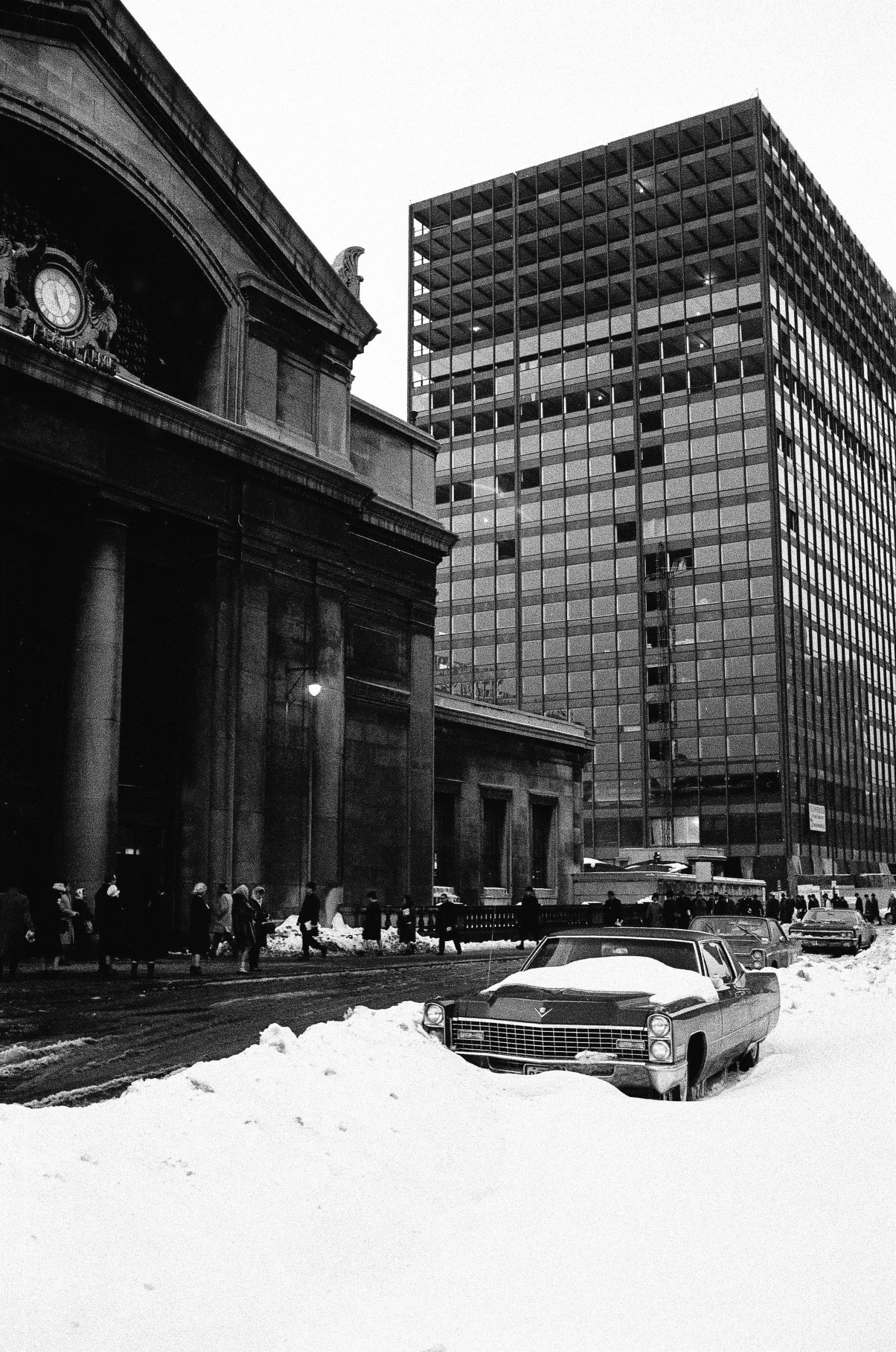
Digging out at Union Station, January 30, 1967; ST-11006892-0020, Chicago Sun-Times collection, CHM, Don Bierman, photographer
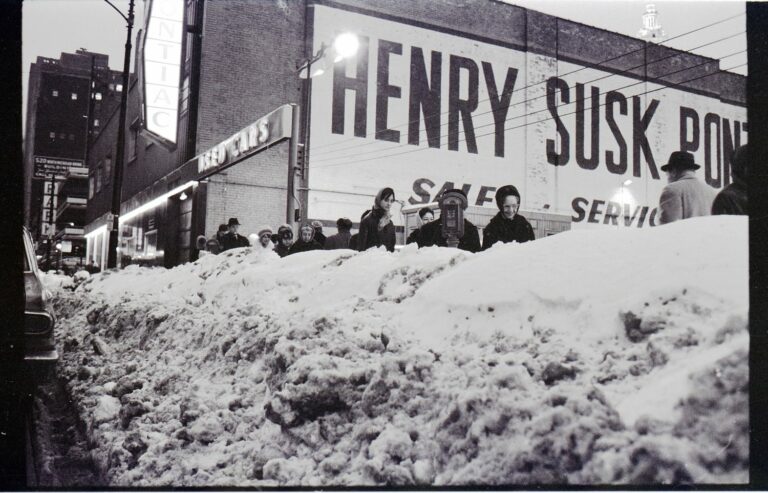
Commuters walk amid snow piles at Grand Avenue and State Street, February 2, 1967. ST-17100061-0002, Chicago Sun-Times collection, CHM
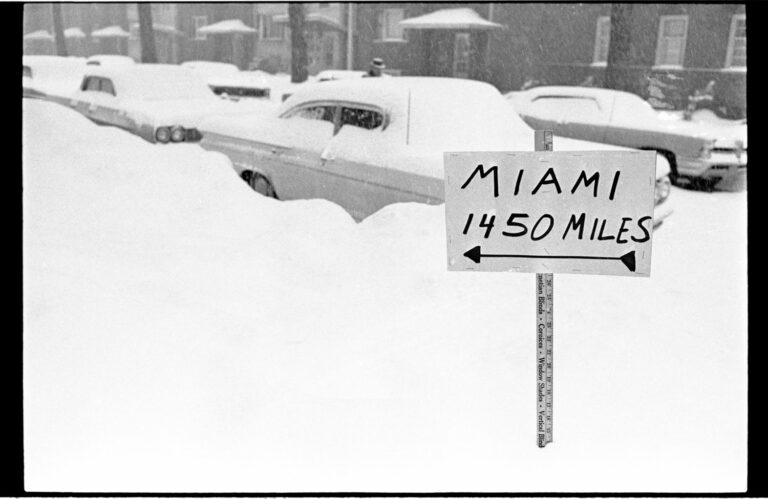
A sign attached to a yardstick in the snow, February 5, 1967. ST-17101329-0003, Chicago Sun-Times collection, CHM
Additional Resources
- In May 1967, Studs Terkel discussed the January snow-in with interviewees, who talked about how human interaction differs during a blizzard than on a clear day.
- Don Bierman for the Chicago Sun-Times documented the crowd in Union Station in the days following the blizzard.
- See more photographs of the aftermath of the blizzard at CHM Images.
See what other's are saying!